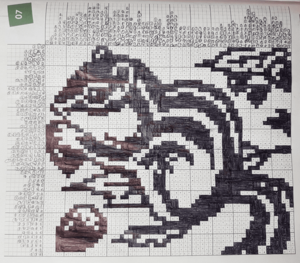[Dart] Dart-02-08: Exceptions
| Dart-02: Language Tour | ||
|---|---|---|
| Dart-02-01 | Important concepts | |
| Dart-02-02 | Keywords | |
| Dart-02-03 | Variables | |
| Dart-02-04 | Built-in types | |
| Dart-02-05 | Functions | |
| Dart-02-06 | Operators | |
| Dart-02-07 | Control flow statements | |
| Dart-02-08 | Exceptions | |
| Dart-02-09 | Classes | |
| Dart-02-10 | Generics | |
| Dart-02-11 | Libraries and visibility | |
| Dart-02-12 | Asynchrony support | |
| Dart-02-13 | Generators | |
| Dart-02-14 | Callable classes | |
| Dart-02-15 | Isolates | |
| Dart-02-16 | Typedefs | |
| Dart-02-17 | Metadata | |
| Dart-02-18 | Comments |
Exceptions
Dart code는 exception(예외)을 throw and catch 할 수 있다. 예외는 예상치 못한 일이 발생했음을 나타내는 error이다. 예외가 catch 되지 않으면, 예외를 발생시킨 isolate가 일시 중단되고, 일반적으로 isolate 및 program이 종료된다.
Java와 달리, Dart의 모든 예외는 확인되지 않은 예외이다. method는 throw 할 수 있는 예외를 선언하지 않으며, 예외를 catch 할 필요가 없다.
Dart는 미리 정의된 수많은 subtype 뿐만 아니라, Exception과 Error type을 제공한다. 또한, 자신의 예외를 정의할 수 있다. 그러나, Dart program은 Exception 및 Error 객체뿐만 아니라 null이 아닌 모든 객체를 예외로 throw 할 수 있다.
0. Example
if (astronauts == 0) {
throw StateError('Noi astronauts.');
}
try {
for (final object in flybyObjects) {
var description = await File('$object.txt').readAsString();
print(description);
}
} on IOException catch (e) {
print('Could not describe object: $e');
} finally {
flybyObjects.clear();
}
1. Throw
다음은 예외를 throw 하거나 발생시키는 예이다:
throw FormatException('Expected at least 1 section');
임의의 객체를 던질 수도 있다.
throw 'Out of llamas!';
Production-quality code는 일반적으로
Error또는Exception을 실행시키는 type을 throw 한다.
예외를 throw 하는 것은 expression이기 때문에, =>문 뿐만 아니라 expression을 허용하는 다른 모든 곳에서 예외를 throw 할 수 있다.
void distanceTo(Point other) => throw UnimplementedError();
2. Catch
예외를 catching 하거나 capturing 하면, exception을 다시 throw 하지 않는 이상 error propagating(전파)이 중지된다. 예외를 catching 하는 것은 당신에게 그것을 처리할 기회를 준다.
try {
breedMoreLlamas();
} on OutofLlamasException {
buyMoreLlamas();
}
둘 이상의 예외 type을 throw 할 수 있는 code를 처리하기 위해, 여러 catch절을 지정할 수 있다. throw된 객체의 유형ㅇ과 일치하는 첫 번째 catch절이 예외를 처리한다. catch절이 유형을 지정하지 않으면, 해당 절은 모든 type의 throw된 객체를 처리할 수 있다.
try {
breedMoreLlamas();
} on OutOfLlamasException {
// A specific exception
buyMoreLlamas();
} on Exception catch (e) {
// anything else that is an exception
print('Unknown exception: $e');
} catch (e) {
// No specified type, handles all
print('Something really unknown: $e');
}
앞의 코드에서 볼 수 있듯이, on과 catch 중 하나 또는 둘 다를 사용할 수 있다. 예외 type을 지정해야 할 때 on을 사용한다. 예외 처리에 예외 객체가 필요할 때 catch를 사용한다.
catch()에 하나 또는 두 개의 parameter를 지정할 수 있다. 첫 번째는 throw된 예외이고, 두 번째는 stack trace(StackTrace 객체)이다.
try {
// ...
} on Exception catch (e) {
print('Exception details:\n $e');
} catch (e, s) {
print('Exception details:\n $e');
print('Stack trace:\n $s');
}
예외가 전파되도록 허용하면서 부분적으로 예외를 처리하려면, rethrow keyword를 사용한다.
void misbehave() {
try {
dynamic foo = true;
print(foo++); // Runtime error
} catch (e) {
print('misbehave() partially handled ${e.runtimeType}.');
rethrow; // Allow callers to see the exception.
}
}
void main() {
try {
misbehave();
} catch (e) {
print('main() finished handling ${e.runtimeType}.');
}
}
3. Finally
예외가 발생했는지 여부에 관계없이 일부 코드가 실행되도록 하려면, finally절을 사용한다. 예외와 일치하는 catch절이 없으면, finally절이 실행된 후 예외가 전파된다.
try {
breedMoreLlamas();
} finally {
// Always clean up, even if an exception is thrown.
cleanLlamaStalls();
}
finally절은 일치하는 catch절 다음에 실행된다.
try {
breedMoreLlamas();
} catch (e) {
print('Error: $e'); // Handle the exception first.
} finally {
cleanLlamaStalls(); // Then clean up.
}

댓글남기기